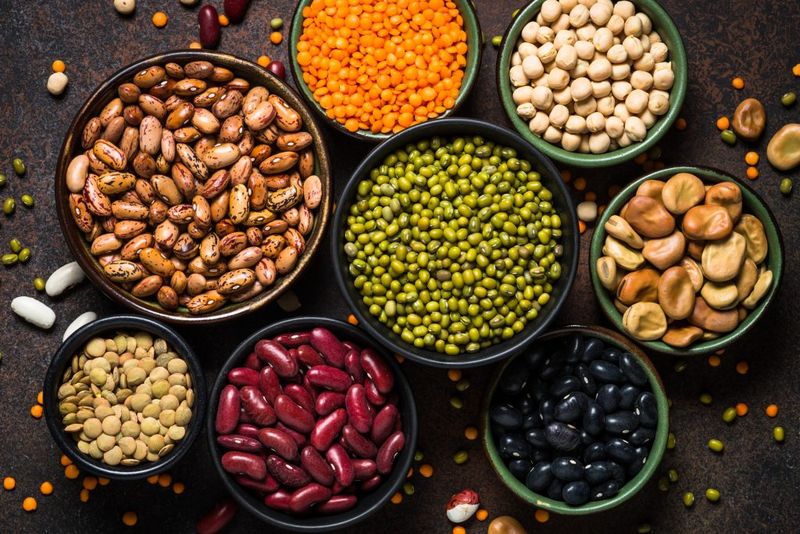ABARES forecasts 32pc tumble in major pulses

ABARES has forecast production of Australia’s major winter pulse crops to 2.684 million tonnes, down 32 percent from the 3.95Mt grown in 2022-23.
In figures released today in its Australian Crop Report, the national forecaster is predicting a 1pc increase in chickpea production to 544,000t, but has forecast big drops for Australia’s other major winter pulses, namely faba beans, field peas, lentils, and lupins.
Climate modelling suggests El Niño conditions are likely to develop in spring, and this has contributed to southern Australian growers reducing area planted to pulses, which are likely to produce average yields at best if spring brings hot and dry conditions.
| 2022-23 ha | 2022-23tonnes | 2023-24 ha | 2023-24tonnes | tns y-o-ychange |
|
| Chickpeas | 398,000 | 541,000 | 457,000 | 544,000 | +1pc |
| Faba beans | 305,000 | 585,000 | 247,000 | 400,000 | -32pc |
| Field peas | 198,000 | 314,000 | 197,000 | 233,000 | -26pc |
| Lentils | 646,000 | 1,412,000 | 645,000 | 906,000 | -36pc |
| Lupins | 535,000 | 1,098,000 | 425,000 | 601,000 | -45pc |
| TOTAL | 2,082,000 | 3,950,000 | 1,971,000 | 2,684,000 | -32pc |
Table 1: Current crop and initial new-crop hectare and tonnage estimates for Australia’s major pulses. Source: ABARES
Queensland chickpea area is forecast at 250,000ha, up 50,000ha from last year, to produce 315,000t, up from 292,000t in the most recent harvest.
“Area planted to barley and chickpeas are forecast to increase as growers look to mitigate risks of this unfavourable rainfall outlook by looking to plant more resilient crops,” ABARES said in the report in relation to Qld.
“Returns from barley and chickpeas have also improved relative to wheat, making them more attractive in the mix of plantings.”
In New South Wales, chickpea production is forecast to drop 2000t from last year to 190,000t, and estimated area at 170,000ha is seen as being up 10,000ha from last year.
In South Australia, the area planted to faba beans is estimated at 83,400ha, down from 120,000ha last season, and production is expected to more than halve to 144,000t from last year’s record 300,000t.
In Victoria, the outlook for production at 150,000t is unchanged from last year’s estimate, but ABARES has forecast planted area at 100,000ha, down 10,000ha on last year.
At 320,000ha, no change is seen in SA lentil area, but production is forecast to fall to 528,000t from a record 900,000t last year.
Victorian lentil area is forecast to be up 5000ha to 305,000ha to produce a much smaller crop of 350,000t, down from a record 475,000t in 2022-23.
The area of Australian farmland planted to lupins is seen at 425,000ha, with only the 2013-14 area of 387,000ha being below it in the past 30 years.
The vast majority of Australia’s lupins are grown in Western Australia, and ABARES is forecasting the WA lupin now in the ground at 300,000ha to produce 470,000t, down from 925,000t from 400,000ha last year.
Commercial quantities of lupins are grown in other states, but are mostly consumed by the domestic stockfeed sector.
Read also
Wheat in Southern Brazil Impacted by Dry Weather and Frosts
Oilseed Industry. Leaders and Strategies in the Times of a Great Change
Black Sea & Danube Region: Oilseed and Vegoil Markets Within Ongoing Transfor...
Serbia. The drought will cause extremely high losses for farmers this year
2023/24 Safrinha Corn in Brazil 91% Harvested
Write to us
Our manager will contact you soon



